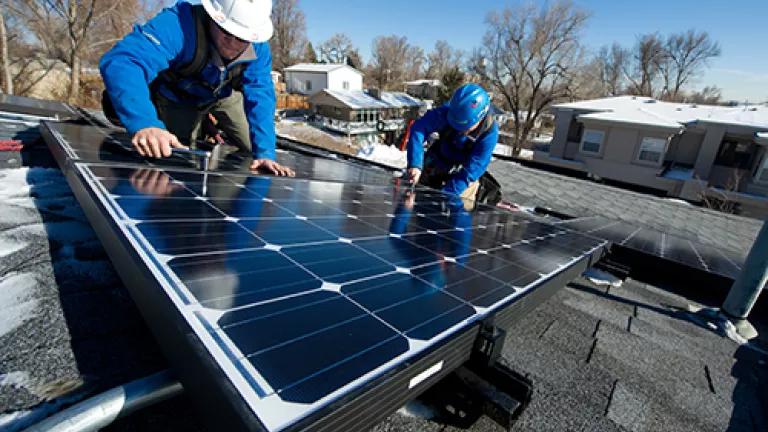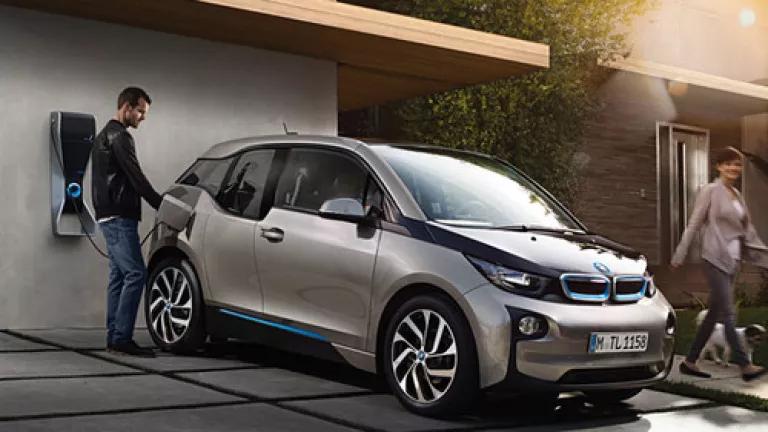Utility Rate Decision in California Can Help Transition to Cleaner Electric System - Could Be Much Better

The California Public Utilities Commission (CPUC) just approved a redesign of residential electric bills that will help reinforce California's efforts to strengthen its ambitious climate and clean energy goals, improve its economic and public health, and help customer's pocketbooks while adding a mechanism that takes into account when you use electricity. But it could have been much better.
The new rate design (for customers of California's investor-owned utilities serving 75 percent of the state) will continue to encourage customers to invest in energy efficiency and rooftop solar power generation, although much less than it would have under an Alternative Proposed Decision. It also adds a new component to encourage customers to shift electricity use to times of the day when there is more available and it costs less - and away from times when supply is tight and it costs utilities more. Called time-of-use rates (TOU), this component will also provide the added flexibility needed to significantly increase the share of renewable energy in our electricity mix.
Today's CPUC Decision:
- Rejects a new fixed charge on your monthly bill, which you could not avoid no matter how much electricity you saved, and instead adopts a minimum bill to ensure everyone pays something for using the system every month, without harming low-income customers or discouraging energy efficiency;
- Significantly reduces the highest-tier rates, substantially lowering the conservation incentive for high users and shifting big costs to low users, but introduces a "super-user electric surcharge" which still gives the very highest users an incentive to conserve; and
- Transitions most customers to a time-of-use rate by 2019 after an extensive pilot and study period to ensure the best design, protection of the most vulnerable customers (low-income and medical needs customers), and effective outreach and education.
No new fixed monthly charge - for now
Currently, there are some customers (in reality, very few) who in some or all months don't pay anything toward their use of the grid. (Since virtually all of a utility's costs to provide electricity are collected through a per kilowatt-hour charge, cost recovery is dependent on how much we use.) These customers may have unoccupied homes (vacation home owners) or may be rooftop solar customers producing as much electricity as they consume (but who still want the grid to provide power when they can't and to take the excess power they don't consume).
The original proposed decision, based on a recommendation from the utilities, would have instituted a $10 fixed monthly customer charge, which would reduce how much could be saved on your bill from investing in energy efficiency or rooftop solar.
Instead of adopting a fixed charge that would take away some of our control to manage monthly bills, the commission adopted a minimum bill, which guarantees the utility receives at least some payment from every customer - even if their use is zero. But the threshold is so low that nearly everyone uses more than $10 of electricity in a month (average bill is $88) and for them the minimum bill basically disappears and they're charged on their per kilowatt-hour use.
Unfortunately, the decision doesn't take the fixed charge completely off the table - it allows the utilities to return with a proposal at a later date. The many reasons why fixed charges are unnecessary and harmful still apply and we hope the CPUC rejects any such proposal.
Higher tier rates are substantially reduced - shifting big costs to low users and weakening conservation incentives - but a "super-user electric surcharge" is added
The decision significantly reduces the highest-tier rates and shifts a large share of costs to low users who typically have fewer ways to conserve. This substantially reduces the incentive high users have to conserve and lengthens the payback that customers investing in energy efficiency and rooftop solar receive.
Customers who use more than twice the average amount (2-10% of customers depending on the utility), will pay a "super-user electric surcharge." This will ensure that the very highest users continue to see a signal to conserve, but it misses most high users.
TOU design can enable the flexibility needed to transition to a cleaner energy future
TOU rates that vary based on the time of day can provide significant environmental and bill-payer benefits by reducing the need for new facilities or peak operation of fossil-fuel power plants, thus reducing costs, and by shifting use to times when renewable production is high to facilitate greater integration of renewables into the grid. But unless TOU rates are designed properly, and customers are informed and given the proper tools for responding to price signals, these results may not occur.

A recent study by the U.S. Department of Energy looked at how utilities can best manage and market TOU rates. It found that by (1) establishing accurate pricing signals, (2) ensuring that automated control and technology is actually ready for prime time in customer's homes and businesses, and (3) making sure customer education is done right, TOU rates can empower customers to understand that shifting their use can save them money, and be good for the grid and environment. While California should begin reaping these benefits as soon as possible, the CPUC decision wisely establishes an extensive pilot and study period - with customer protections. The plan is to learn from these pilots and studies and be ready to implement the new design for nearly all customers in 2019.
Finally, the decision maintains a credit in the TOU design that reduces the cost to low usage customers, continues to provide a conservation incentive, and accounts for climate zone differences (higher credit for hotter zones). Known as a baseline credit, it will be presented on the bill as a simple line item per-kwh discount for the first bunch of kWhs used (number of kWh in this bucket differs by climate zone). This component is important because while we want customers to shift from peak (costly) periods to off-peak or super off-peak periods when oversupply exists, we do not want to incent an overall increase in use (unless it is for beneficial reasons like electric vehicles which reduce overall emissions). It will allow us to capture the benefits of both approaches - a strategic shifting and overall reduction in use.
While much more work lies ahead to transition to a cleaner and more equitable energy future, and the CPUC missed a big opportunity to do more, the decision establishes a workable starting platform.

